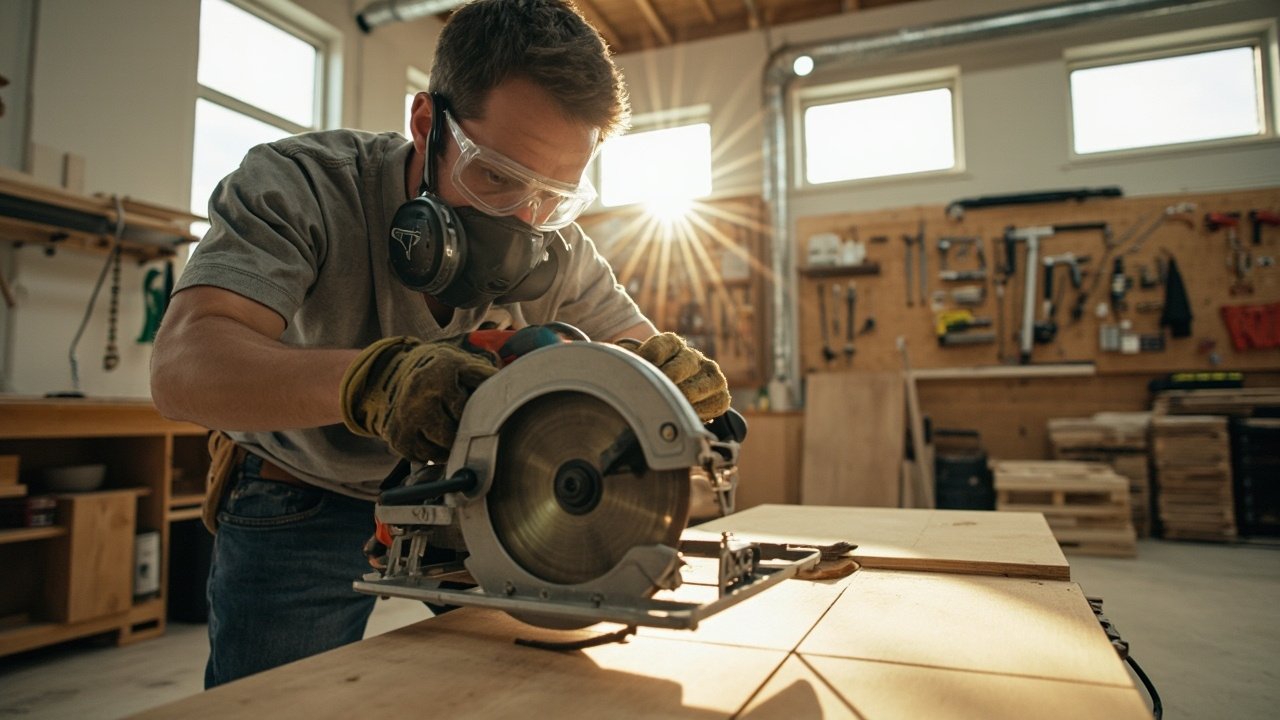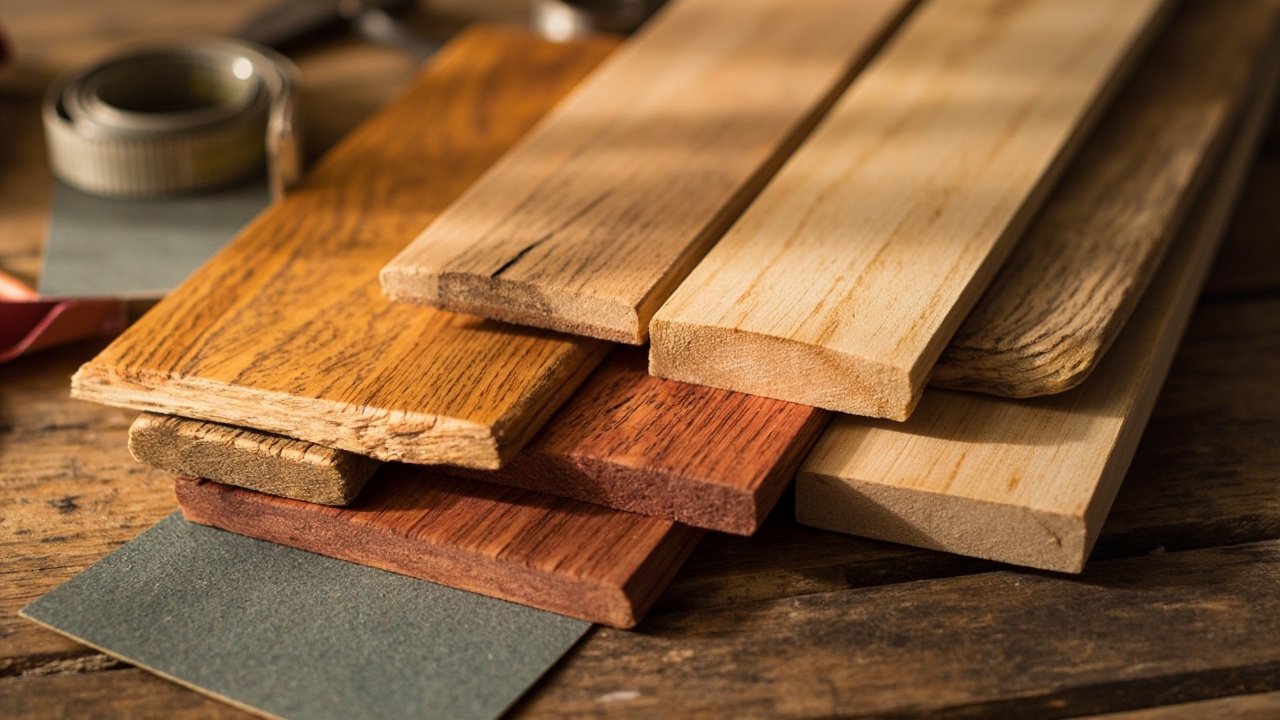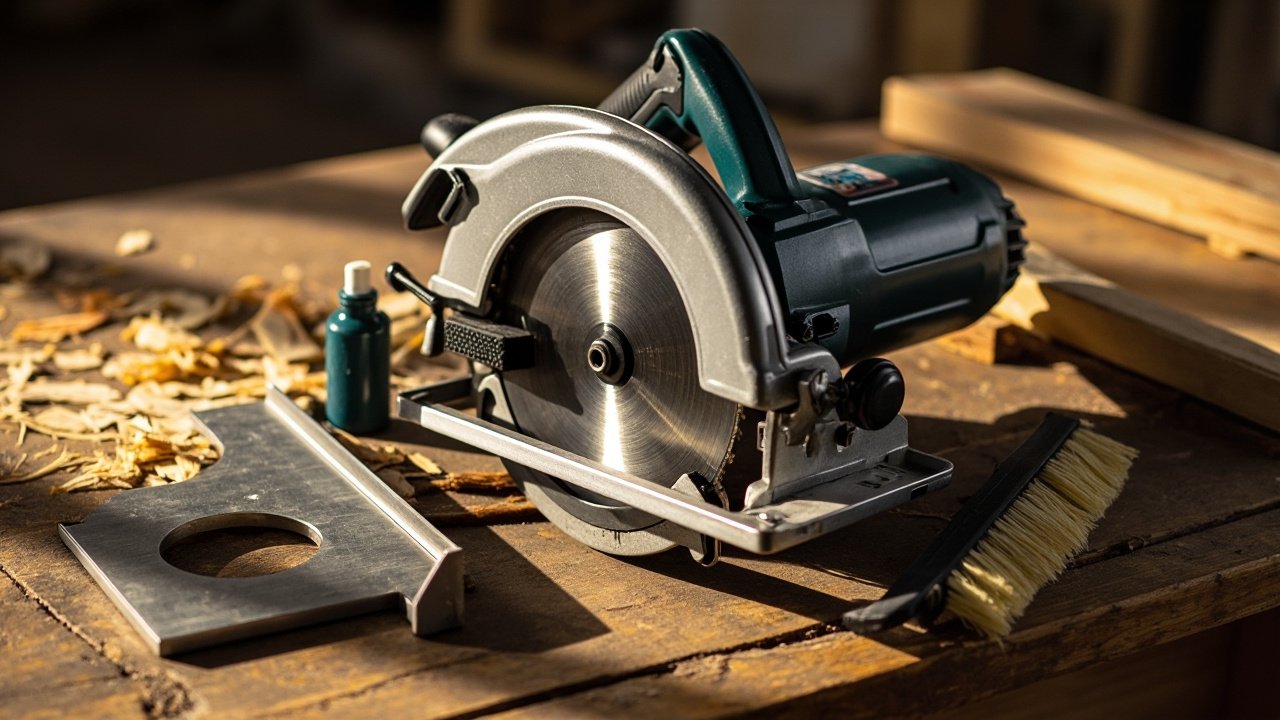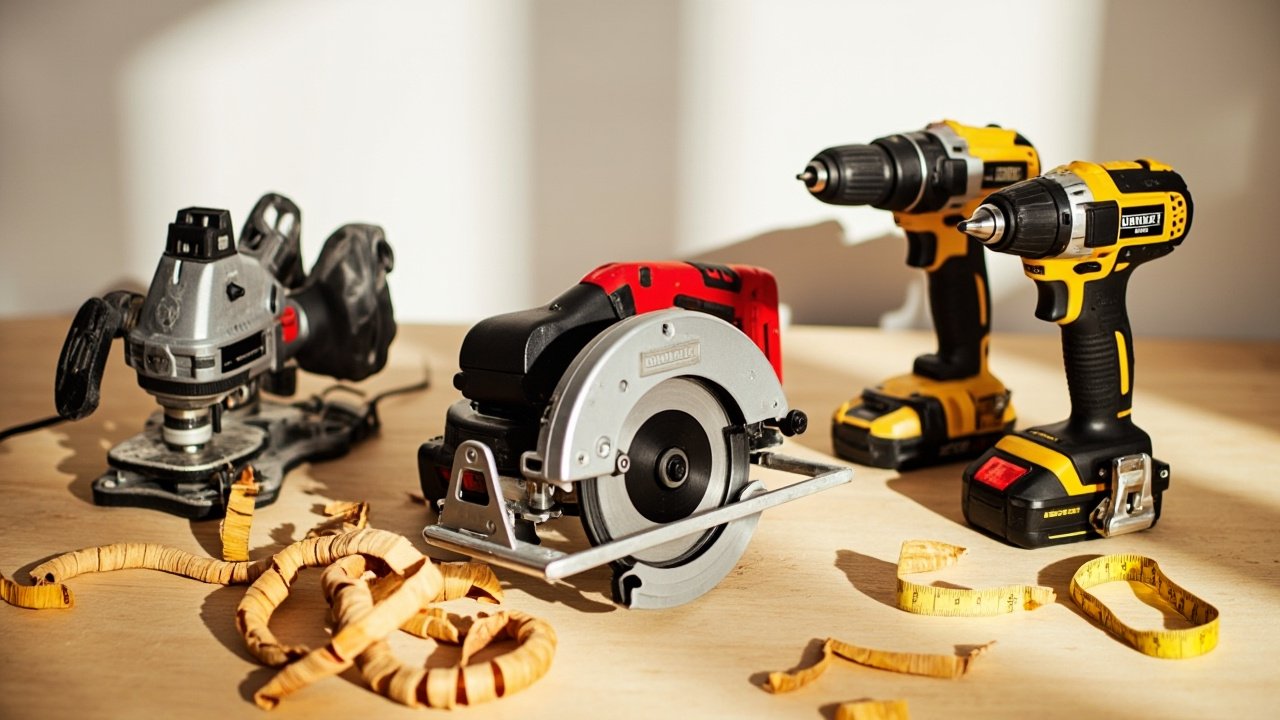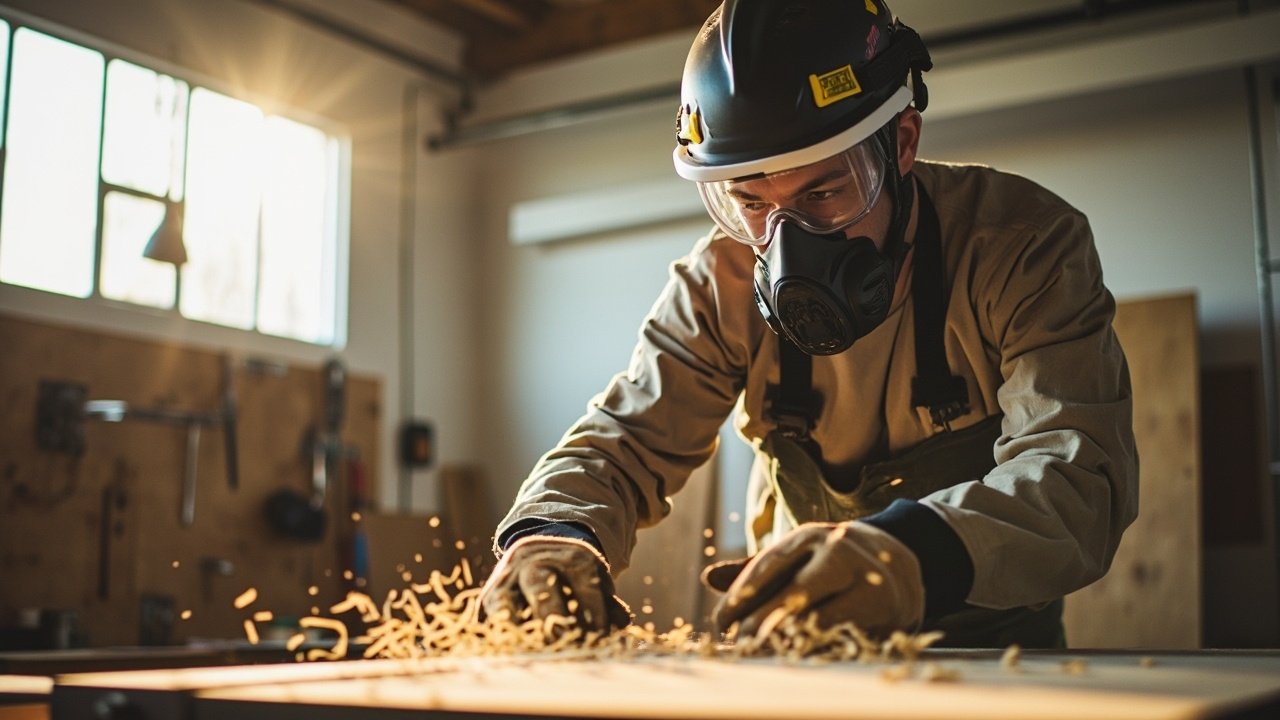Woodworking is an incredibly rewarding craft, allowing you to create beautiful, functional pieces with your own hands. However, it also comes with significant risks especially when working with power tools. Preventing power tool accidents in woodworking should always be your top priority, whether you’re a beginner or an experienced woodworker.
In this comprehensive guide, we’ll dive deep into preventing power tool accidents in woodworking, covering everything from basic safety principles to advanced techniques. We’ll also explore how different regional conditions across the U.S. can impact safety and provide tailored advice to keep you protected.
Table of Contents
By the end of this guide, you’ll have a thorough understanding of preventing power tool accidents in woodworking, ensuring that every project you undertake is both enjoyable and safe.
Why Preventing Power Tool Accidents in Woodworking Matters
When it comes to preventing power tool accidents in woodworking, understanding the risks is the first step. Power tools such as table saws, routers, drills, and sanders are incredibly efficient, but they can also be unforgiving if misused.
The Real Risks of Power Tool Accidents
- Cuts & Lacerations: Even a momentary lapse in focus can lead to severe injuries.
- Kickback: A common cause of accidents, especially with table saws and circular saws.
- Hearing Damage: Prolonged exposure to loud power tools can cause permanent hearing loss.
- Respiratory Issues: Sawdust and chemical fumes can harm your lungs over time.
- Electrical Hazards: Faulty wiring or improper tool handling can lead to shocks or fires.
Preventing power tool accidents in woodworking isn’t just about avoiding injuries it’s about creating a workspace where you can work confidently and efficiently.
A Personal Wake-Up Call
I’ll never forget the first time I experienced a near-miss with a circular saw. I was so focused on making a precise cut that I didn’t notice my hand drifting too close to the blade. That split-second realization taught me the importance of preventing power tool accidents in woodworking through constant vigilance.
The truth is, accidents happen fast. But with the right precautions, they can almost always be avoided.
Essential Tips for Preventing Power Tool Accidents in Woodworking
1. Know Your Tools Inside and Out
Preventing power tool accidents in woodworking starts with understanding your equipment.
Read the Manual (Yes, Really!)
- Every tool has unique safety features and operating instructions.
- Manufacturers include critical warnings that could save you from injury.
- Pay special attention to kickback prevention mechanisms on saws.
Practice Before Using a New Tool
- Test unfamiliar tools on scrap wood before tackling a real project.
- Learn how the tool reacts under different conditions (e.g., hardwoods vs. softwoods).
Understand Tool-Specific Risks
- Table Saws: Kickback is the biggest danger always use a riving knife and blade guard.
- Drills: Beware of bit breakage and workpiece spinning.
- Routers: High-speed cutting requires a firm grip and controlled movements.
2. Wear the Right Safety Gear
Preventing power tool accidents in woodworking means never skipping protective equipment.
Essential Safety Gear Checklist
| Safety Item | Purpose |
|---|---|
| Safety Glasses | Protects eyes from flying debris |
| Hearing Protection | Prevents long-term hearing damage |
| Dust Mask/Respirator | Filters harmful sawdust and fumes |
| Anti-Slip Gloves | Improves grip without reducing dexterity |
| Steel-Toe Boots | Protects feet from heavy falling objects |
Regional Considerations
- Humid States (FL, LA): Moisture can fog safety glasses use anti-fog coatings.
- Cold Climates (MN, WI): Wear insulated gloves that don’t hinder movement.
- Dry Areas (AZ, NV): Dust is a bigger hazard upgrade to a respirator.
3. Keep Your Workspace Clean and Organized
Clutter is a leading cause of accidents. Preventing power tool accidents in woodworking requires a tidy, well-organized shop.
Workspace Safety Tips
✔ Clear Walkways: Tripping over cords or scraps can lead to disastrous falls.
✔ Proper Lighting: Shadows can obscure hazards use bright LED shop lights.
✔ Dust Management: Sawdust buildup is flammable clean regularly with a shop vac.
Storage Solutions
- Pegboards: Keep tools visible and within easy reach.
- Tool Chests: Store sharp objects securely.
- Labeled Bins: Organize screws, nails, and small parts to avoid spills.
4. Use the Right Tool for the Job
Preventing power tool accidents in woodworking means never forcing a tool beyond its limits.
Common Tool Misuse Mistakes
- Using a circular saw for fine detail work (use a jigsaw instead).
- Cutting metal with a wood blade (always use the correct blade type).
- Overloading a power drill with excessive torque (can strip screws or break bits).
Regional Tool Adjustments
- Coastal Areas (CA, NC): Salt air accelerates rust use stainless steel tools.
- Mountain States (CO, UT): High altitude can affect battery-powered tools keep extras charged.
5. Stay Focused and Avoid Distractions
Preventing power tool accidents in woodworking requires undivided attention.
How to Minimize Distractions
- Silence Your Phone: A single notification can break concentration.
- Set Boundaries: Let family know when you’re working to avoid interruptions.
- Take Breaks: Fatigue leads to mistakes rest every 60-90 minutes.
Regional Adaptations for Preventing Power Tool Accidents
Dealing with Humidity in the South
Preventing power tool accidents in woodworking in humid states requires extra precautions.
Key Adjustments
✔ Dehumidifiers: Keep moisture levels below 50% to prevent rust.
✔ Rust-Resistant Tools: Opt for coated or stainless steel equipment.
✔ Wood Storage: Keep lumber in a climate-controlled space to avoid warping.
Handling Cold Weather in the Midwest
Preventing power tool accidents in woodworking in freezing conditions is critical.
Winter Workspace Tips
✔ Tool Warm-Up: Let tools reach room temperature before use.
✔ Non-Slip Mats: Prevent icy surfaces in unheated garages.
✔ Lubrication: Cold thickens grease use winter-grade lubricants.
Tackling Dry Heat in the Southwest
Preventing power tool accidents in woodworking in arid climates involves managing dust and heat.
Read also: What are the basic safety rules for using woodworking tools?
Desert Safety Measures
✔ Cooling Fans: Prevent overheating in non-AC workspaces.
✔ Hydration: Keep water nearby to avoid heat exhaustion.
✔ Dust Extraction: Use a high-powered dust collector to reduce airborne particles.
Common Mistakes to Avoid
Skipping Maintenance
Preventing power tool accidents in woodworking means regular upkeep.
Maintenance Checklist
- Blade Sharpness: Dull blades increase kickback risk.
- Cord Inspection: Frayed wires can cause shocks or fires.
- Lubrication: Keep moving parts smooth to prevent jamming.
Ignoring Safety Features
- Never remove blade guards or safety switches.
- Always use push sticks when working close to a saw blade.
Rushing Through Projects
- Measure twice, cut once.
- Allow glue and finishes to dry fully before handling.
FAQs on Preventing Power Tool Accidents in Woodworking
Q1: What percentage of woodworking accidents involve power tools?
A: Approximately 72% of serious woodworking injuries involve power tools, with table saws accounting for over 30,000 emergency room visits annually in the U.S. alone. This statistic highlights why preventing power tool accidents in woodworking should be every woodworker’s top priority.
Q2: At what age can someone safely start using power tools for woodworking?
A: While there’s no legal minimum age, we recommend:
- 12-15 years old for supervised use of basic tools (drills, sanders)
- 16+ years old for more dangerous tools (table saws, routers)
- Always consider maturity level and follow all safety protocols for preventing power tool accidents in woodworking
Q3: How much time should I spend learning safety before using a new power tool?
A: Follow this learning protocol:
- 30-60 minutes reading the manual
- 1-2 hours watching professional tutorial videos
- 30 minutes practicing with scrap material
- Ongoing refreshers every 6 months
Tool-Specific Safety Questions
Q4: What’s the single most dangerous power tool in woodworking?
A: Table saws cause the most severe injuries, but routers and nail guns also rank high. For preventing power tool accidents in woodworking with table saws:
- Always use a riving knife
- Maintain proper blade alignment
- Never remove safety guards
- Use push sticks for small cuts
Q5: How do I prevent kickback on a table saw?
A: Kickback prevention involves multiple layers:
- Mechanical protections: Riving knife (reduces chance of kickback by 90%), anti-kickback pawls
- Proper technique: Maintain control of workpiece, never stand directly behind blade
- Blade selection: Use thin-kerf blades for less resistance
- Workspace setup: Ensure adequate outfeed support
Q6: What safety features should I look for when buying new power tools?
A: Prioritize tools with:
- Electric brakes (stops blade in <2 seconds)
- Blade guards that don’t interfere with visibility
- Anti-restart protection (if power is interrupted)
- Vibration reduction technology
- Dust collection ports
Personal Protective Equipment (PPE) Questions
Q7: What’s the best eye protection for woodworking?
A: For preventing power tool accidents in woodworking, use:
- ANSI Z87.1-rated safety glasses for basic protection
- Goggles when sanding or working with chemicals
- Face shields when using lathes or doing heavy cutting
- Prescription safety glasses if you wear glasses
Q8: Are noise-canceling headphones safe for woodworking?
A: Never use active noise-canceling headphones—they block important auditory cues. Instead use:
- Earmuffs (NRR 25+ dB) for loud tools
- Earplugs (disposable or reusable) for moderate noise
- Noise-isolating earphones ONLY if playing safety alerts
Workspace Safety Questions
Q9: What’s the ideal workshop layout for preventing accidents?
A: Follow this zoning approach:
- Cutting zone: Table saw, miter saw (minimum 8′ clearance)
- Assembly zone: Workbench with clamp storage
- Finishing zone: Well-ventilated area away from sparks
- Tool storage: Wall-mounted to reduce clutter
- Emergency zone: Clear path to exits, first aid kit
Q10: How often should I clean my workshop to maintain safety?
A: Implement this cleaning schedule:
- Daily: Sweep sawdust, check floor for trip hazards
- Weekly: Vacuum machines, inspect cords
- Monthly: Deep clean, check fire extinguishers
- Seasonally: Reorganize based on project needs
Emergency Preparedness Questions
Q11: What should be in a woodshop first aid kit?
A: Beyond standard first aid supplies, include:
- Tourniquet (for severe bleeding)
- Sterile eye wash (for sawdust/debris)
- Burn gel (for accidental contact with hot tools)
- Finger splints (for crush injuries)
- Emergency contact numbers posted visibly
Q12: What’s the proper way to respond to a serious power tool injury?
A: Follow this emergency protocol:
- Shut off all tools immediately
- Assess injury: Control bleeding with direct pressure
- Call 911 for:
- Amputations
- Severe bleeding
- Eye injuries
- Never remove embedded objects
- Have someone guide EMS to your location
Advanced Safety Techniques
Q13: What are the best jigs for preventing accidents?
A: Essential safety jigs include:
- Crosscut sled (safer than miter gauge)
- Push blocks with hand grips
- Featherboards for rip cuts
- Circle-cutting jigs for routers
- Zero-clearance inserts to prevent tearout
Q14: How can technology help prevent accidents?
A: Modern safety tech includes:
- SawStop (stops blade on contact with skin)
- Smart guards that adjust automatically
- Dust collection systems with auto-start
- Tool sensors that detect unsafe conditions
- Wearable alerts that vibrate when danger is detected
Psychological Factors in Accident Prevention
Q15: How does fatigue affect accident risk?
A: Studies show:
- After 2 hours: Concentration drops 30%
- After 4 hours: Mistake likelihood doubles
- When tired: Reaction time slows by 0.5 seconds
For preventing power tool accidents in woodworking:
- Take a 10-minute break every hour
- Stop when you feel fatigued
- Never work when sleep-deprived
Q16: What mental habits improve safety?
A: Develop these safety mindsets:
- Pre-cut checklist: Visualize each step
- Tool respect: Never get complacent
- Error anticipation: “What if…” thinking
- Continuous learning: Attend safety workshops
Special Situations
Q17: How do I work safely with reclaimed wood?
A: Extra precautions needed:
- Metal detection: Use a wand before cutting
- Slow feed rates: For possible hidden nails
- Extra PPE: Heavy gloves, face shield
- Dust management: May contain lead paint
Q18: What safety rules change when teaching others?
A: Teaching requires:
- Demonstration area with clear visibility
- Written safety contracts
- Progressive skill building
- Direct supervision until certified competent
- Emergency drills for students
Maintenance Questions
Q19: How often should power tool blades be replaced?
A: Follow these guidelines:
- Table saw blades: Every 6-12 months of regular use
- Router bits: Inspect after 25 hours of use
- Drill bits: Replace when cutting slows noticeably
- Band saw blades: When cuts begin to wander
Q20: What’s the safest way to clean power tools?
A: Proper cleaning method:
- Unplug tool first
- Use brushes – never compressed air
- Lubricate moving parts after cleaning
- Inspect for damage during cleaning
- Test safety features after reassembly
Final Safety Reminder
This expanded FAQ covers virtually every aspect of preventing power tool accidents in woodworking, but safety is an ongoing practice. Remember:
- No project is so urgent that it’s worth an injury
- Complacency is your biggest enemy
- Good woodworkers work carefully; great ones work safely
By making preventing power tool accidents in woodworking your constant focus, you’ll enjoy this rewarding craft for decades to come. Stay safe in your shop!ght.
Preventing power tool accidents in woodworking is about awareness, preparation, and respect for your tools. By following these guidelines, you’ll create a safer, more efficient workspace and enjoy woodworking for years to come.
Key Takeaways
✔ Know your tools inside and out.
✔ Never skip safety gear.
✔ Keep your workspace clean.
✔ Use the right tool for the job.
✔ Stay focused and avoid distractions.
✔ Adapt to regional challenges.
By prioritizing preventing power tool accidents in woodworking, you’ll not only protect yourself but also enhance your craftsmanship. Stay safe, and happy woodworking!


